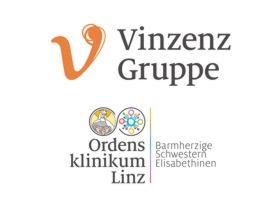Ferlitsch, Arnulf, Bota, Simona, Paternostro, Rafael, Reiberger, Thomas, Mandorfer, Mattias, Heinisch, Birgit, Salzl, Petra, Schwarzer, Remy, Sieghart, Wolfgang, Peck-Radosavljevic, Markus und Ferlitsch, Monika
(2015)
Evaluation of a new balloon occlusion catheter specifically designed for measurement of hepatic venous pressure gradient.
Liver international : official journal of the International Association for the Study of the Liver, 35 (9).
pp. 2115-20.
ISSN 1478-3231
Für diesen Eintrag wurde kein Volltext-Dokument angefügt.
Kurzfassung
BACKGROUND & AIMS
Despite the important clinical value of hepatic venous pressure gradient (HVPG) and its increasing use, no specific balloon occlusion catheters have been designed to cannulate liver veins. The aim of the study was to evaluate the clinical applicability of a novel balloon (NC) occlusion catheter specifically designed for HVPG measurement.
METHODS
Comparison of a new CE-certified 7 French balloon occlusion catheter with a 150° angled tip and radiopaque markers (NC, Pejcl Medizintechnik, Austria), to a commonly used straight balloon catheter (SC; Boston Scientific, USA). Successful liver vein cannulation rate, need for extra equipment and total fluoroscopy time were recorded. Experts (>200) and novices (<20) in HVPG measurements were evaluated separately.
RESULTS
566 HVPG measurements taken by 11 investigators (five experts and six novices) were analysed. Overall, HVPG could be successfully measured in 98.7% of cases. The rate of successful liver vein cannulation at first attempt was significantly higher among experts when compared to novices (87.3% vs 67.3%, P < 0.001). Moreover, the rate of successful liver vein cannulation without need for any additional equipment was higher when using the NC, both among experts (NC:91.9% vs SC:80.6%, P = 0.03) and novices (NC:73.3% vs SC:50.7%, P = 0.001). The mean fluoroscopy time needed to cannulate the hepatic vein was significantly shorter in experts as compared to novices [2.37(0.10-26) vs 5.2(0.6-30.2] min, P < 0.0001), but not significantly different between catheters.
CONCLUSIONS
Both novices and experts achieve higher liver vein cannulation rates using the new specifically designed catheter. The use of the novel catheter might increase rates of successful liver vein cannulation and reduce the need for additional equipment, especially in novices.
Actions (login required)

- Eintrag anzeigen


 Tools
Tools Tools
Tools